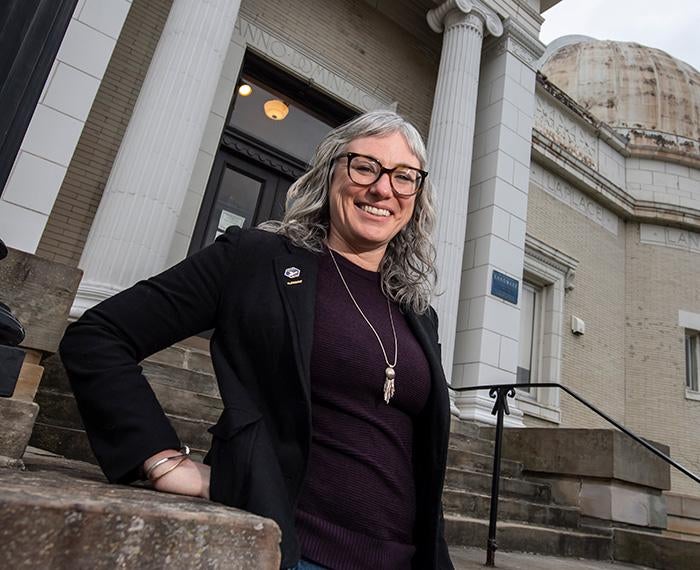
Subscribe to Pittwire Today
Get the most interesting and important stories from the University of Pittsburgh.Pitt research on small galaxies was published in Nature

An international research team has seen some of the smallest galaxies in the early universe by coupling James Webb Space Telescope (JWST) observations with nearby galaxies that acted as cosmic magnifiers, amplifying background light — a combination that allowed the astronomers to see farther than either could see alone.
Their findings show small galaxies emitted sufficient photons for reionization, a process in the early universe that made it possible for light to travel through space. Before reionization, the universe was completely dark.
The results were published in Nature on Feb. 29.
"Understanding the properties of the previously invisible, earliest, tiny galaxies at this critical moment in the universe’s history was one of the driving objectives of the novel JWST observatory and the design for the UNCOVER survey itself,” said Rachel Bezanson, associate professor of physics and astronomy in the Kenneth P. Dietrich School of Arts and Sciences. She is co-lead of the UNCOVER program, which has been collecting, analyzing and sharing data using JWST.
Reionization happened 500 to 900 million years after the Big Bang. Technically, it refers to the transformation of neutral hydrogen, which dominated the universe and was too dense for photons to penetrate, into ionized gas, which photons could pass through.
Put another way, it opened the universe to visible light.
Beyond the reionization process, these observations are essential to understanding the formation of the very first galaxies which, over 12 billion years, have grown and combined and evolved into our present-day galaxies.
The international team also includes researchers from the Swinburne University of Technology in Melbourne, Australia, and the University of Texas at Austin in collaboration with the Paris Astrophysics Institute, which is part of Sorbonne University and the French National Centre for Scientific Research.
— Brandie Jefferson, in collaboration with Sorbonne University; photography by Aimee Obidzinski

